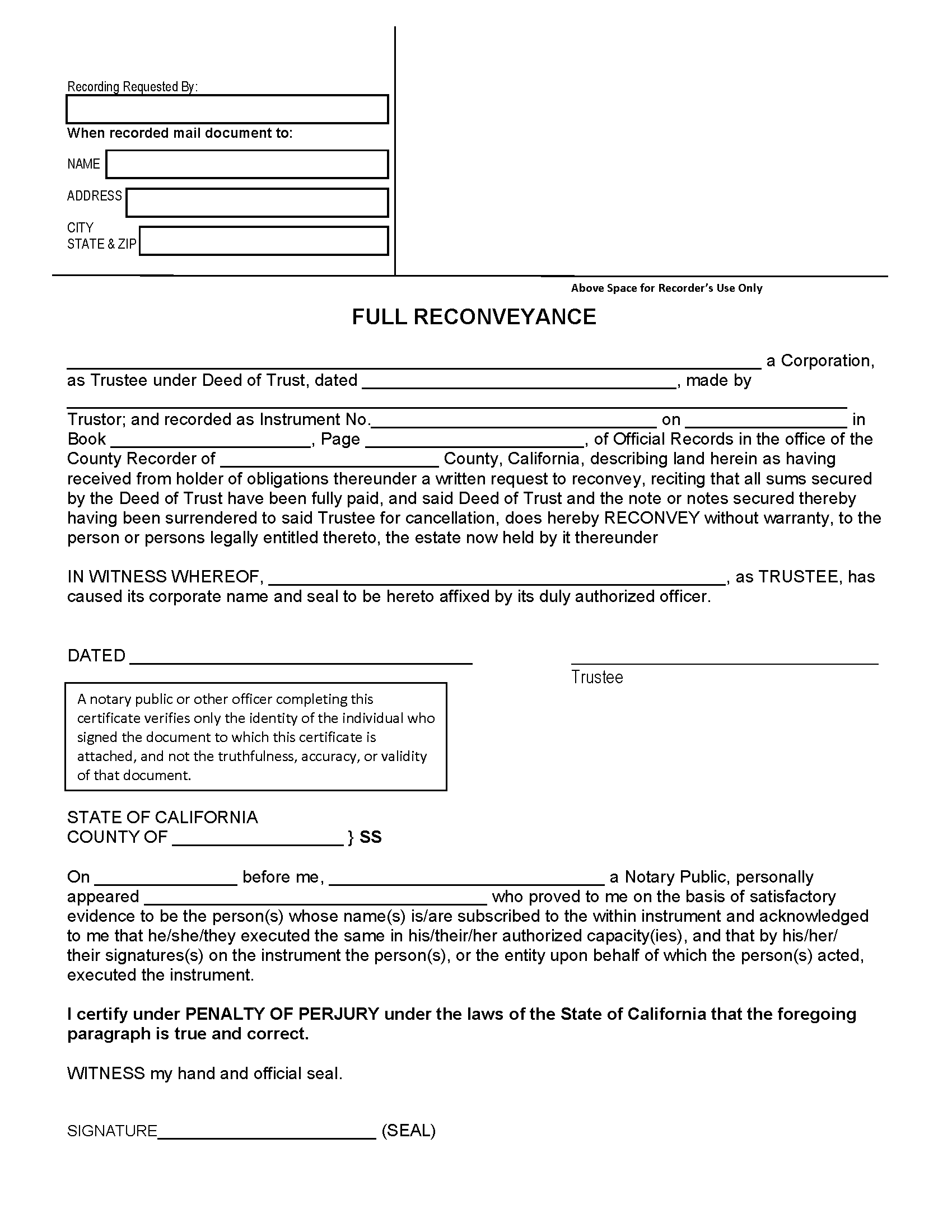Reconveyance Process
Step 1 – Within 30 days of the loan for a deed of trust being repaid by the borrower, the lender must notify the trustee and deliver the following to them[1]:
- The original deed of trust and promissory note.
- A request for a full reconveyance to the borrower.
Step 2 – The trustee prepares a deed of reconveyance to return the property title to the borrower.
Step 3 – The trustee must sign the deed of reconveyance with notary acknowledgment and file it with the County Recorder.[2] Recording fees at the time of this writing are $10 for the first page and $3 for each additional page.[3]
Step 4 – After the deed of reconveyance has been recorded, the lien created by the deed of trust is removed from the title, and the borrower will be sent a copy of the deed as proof.
